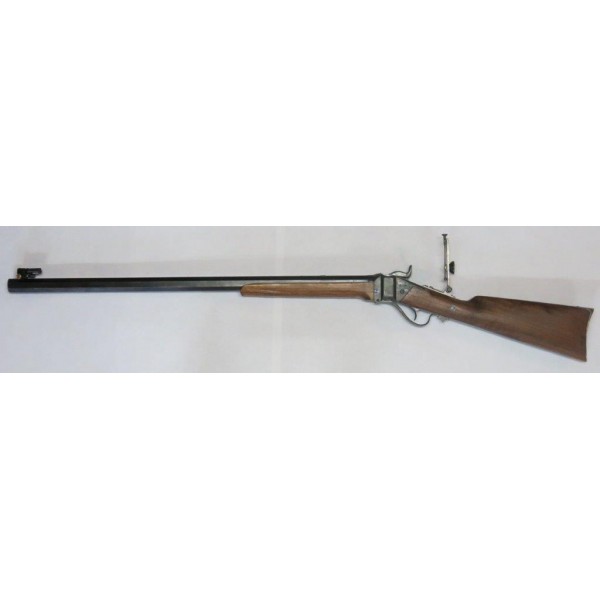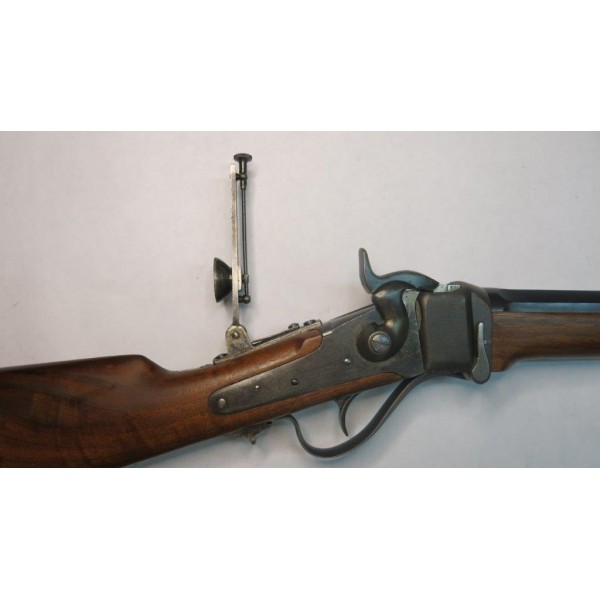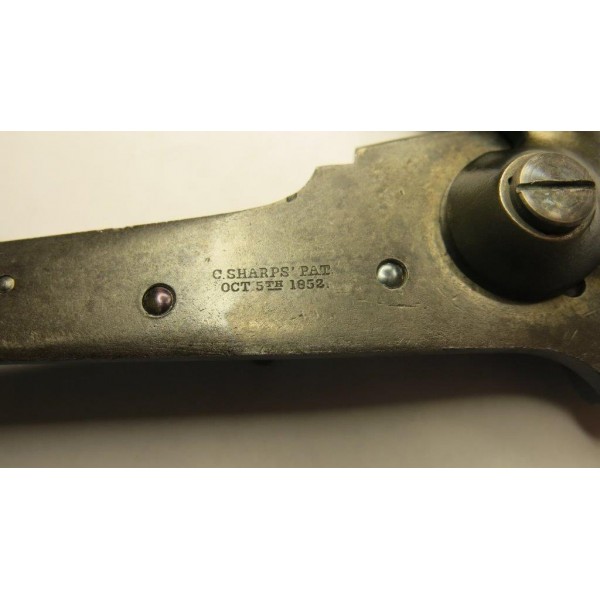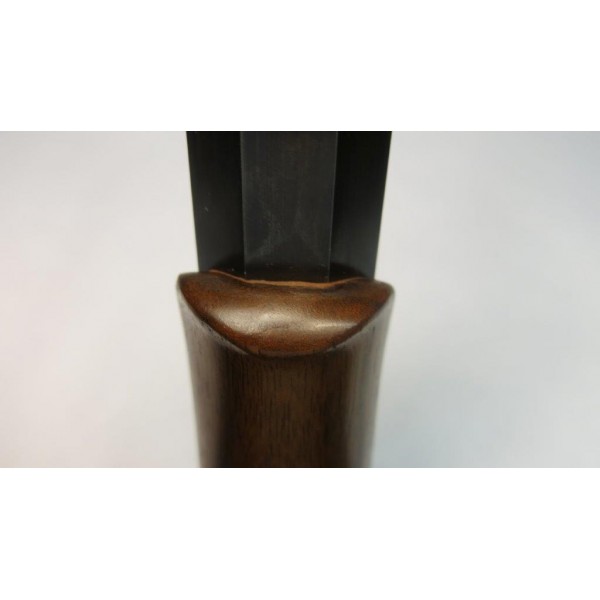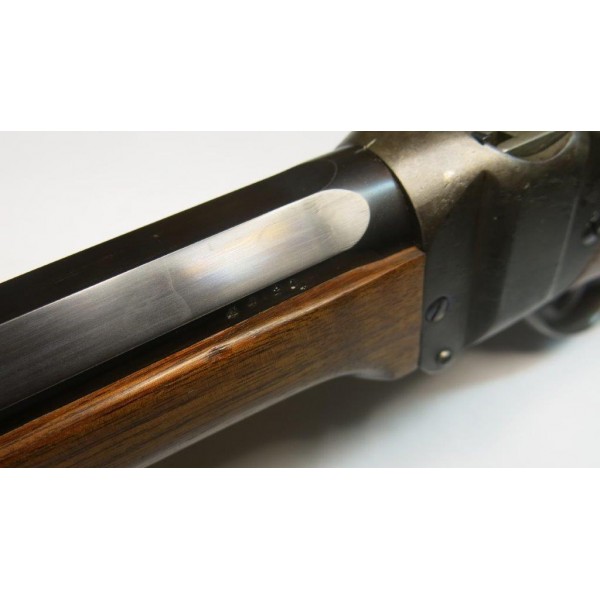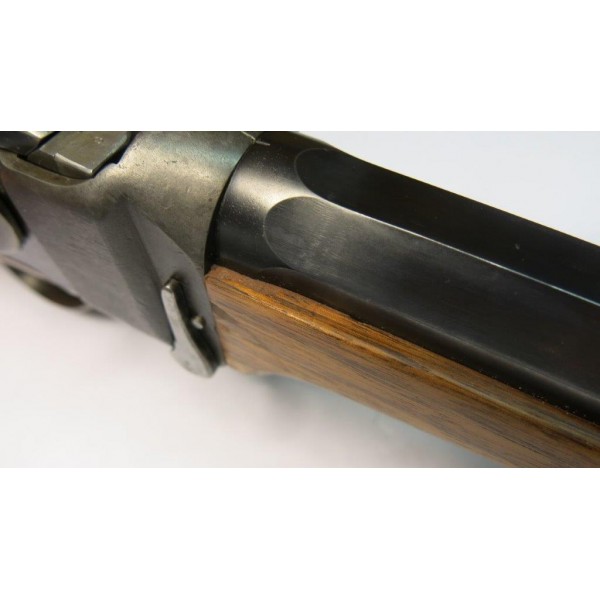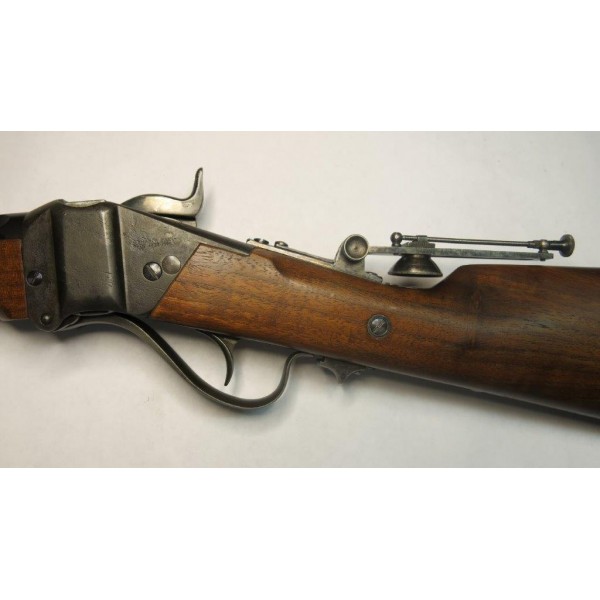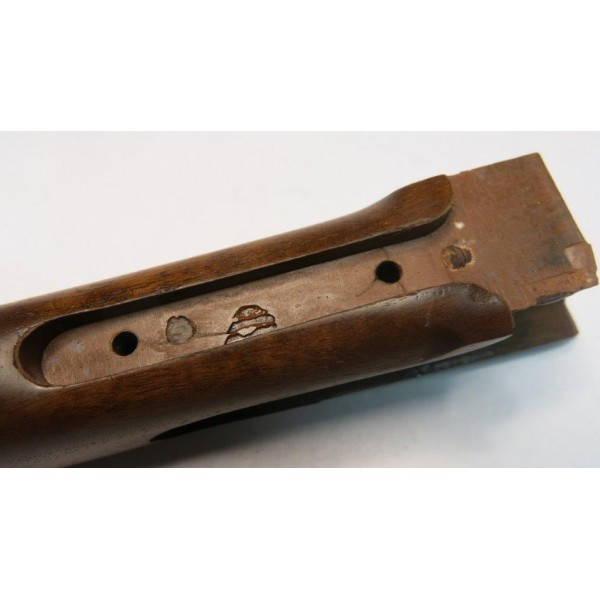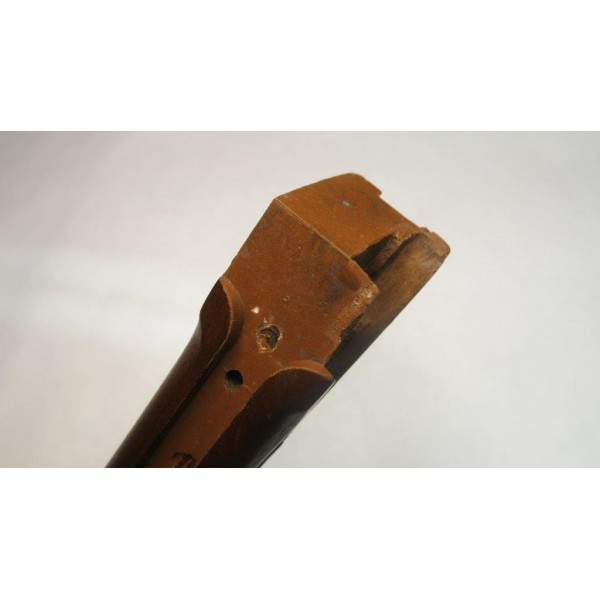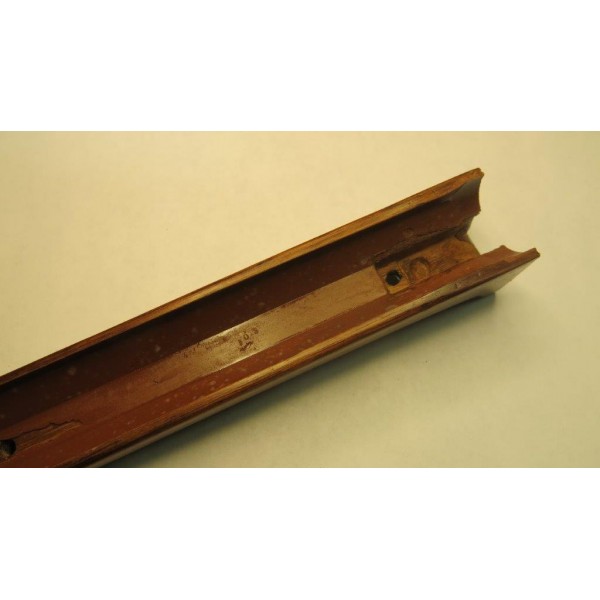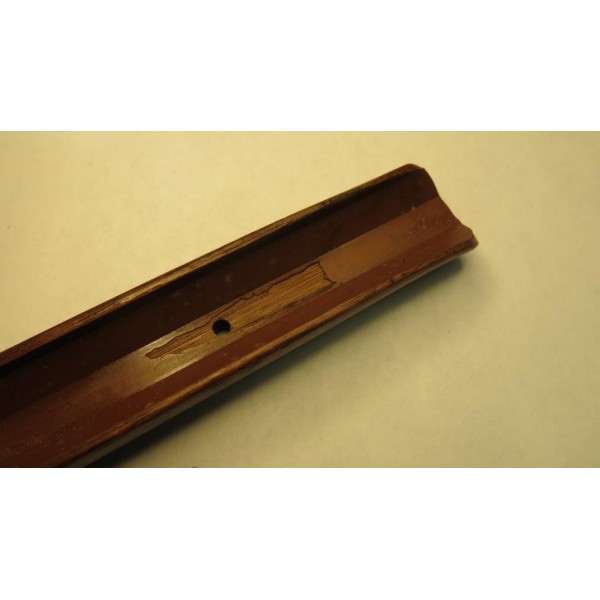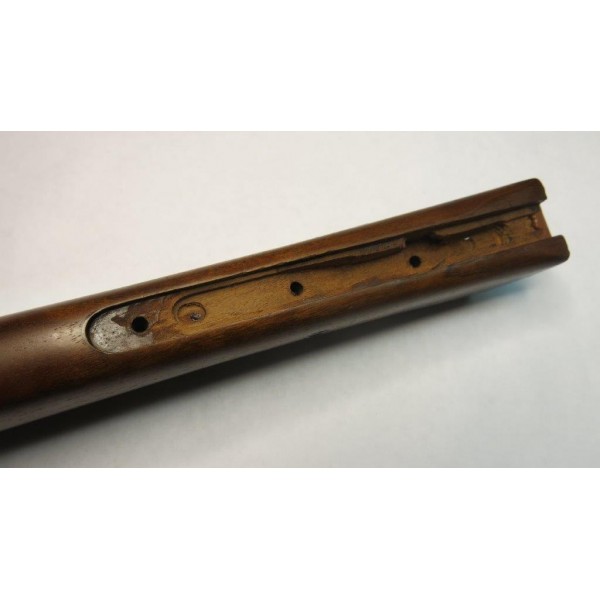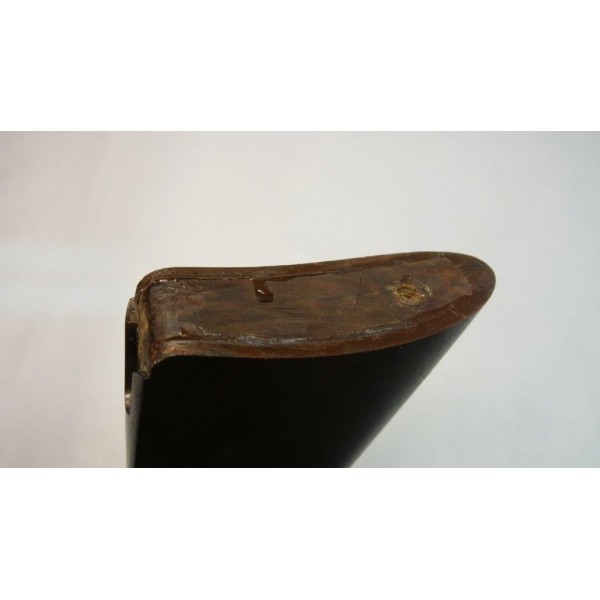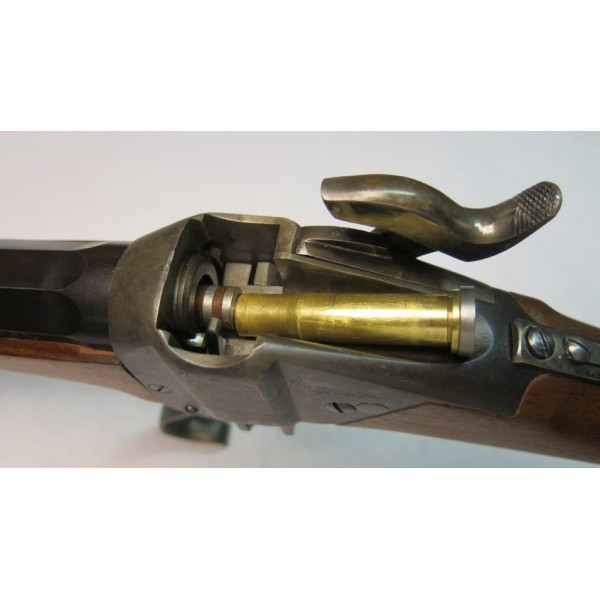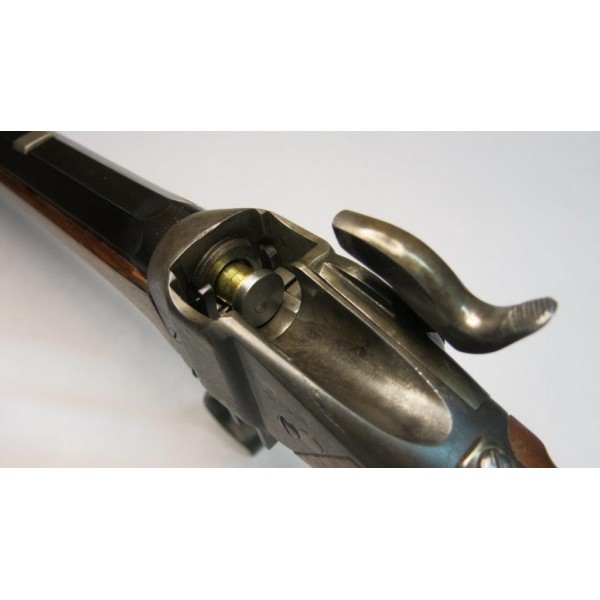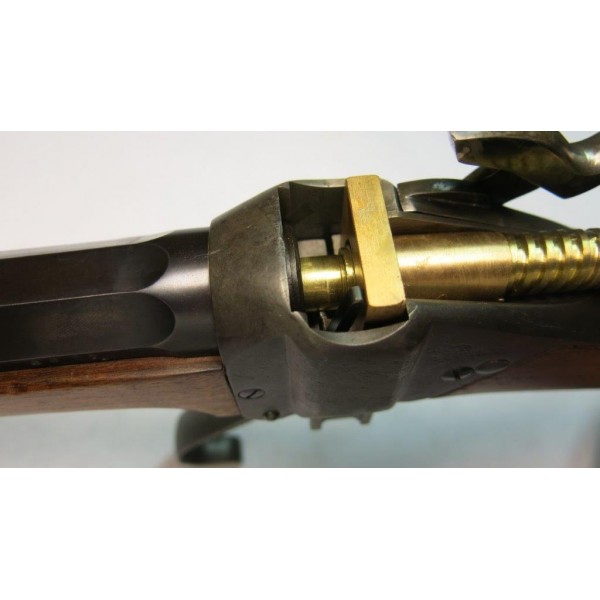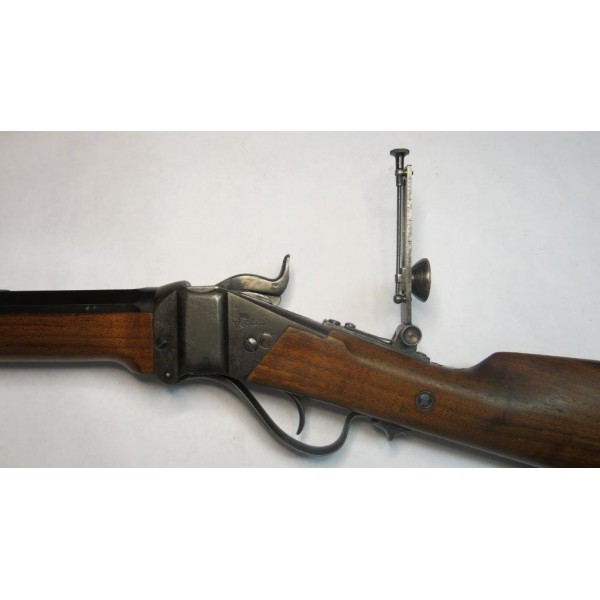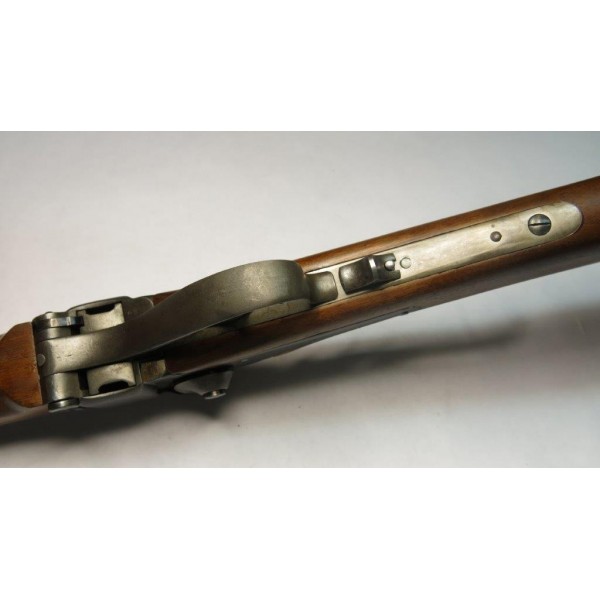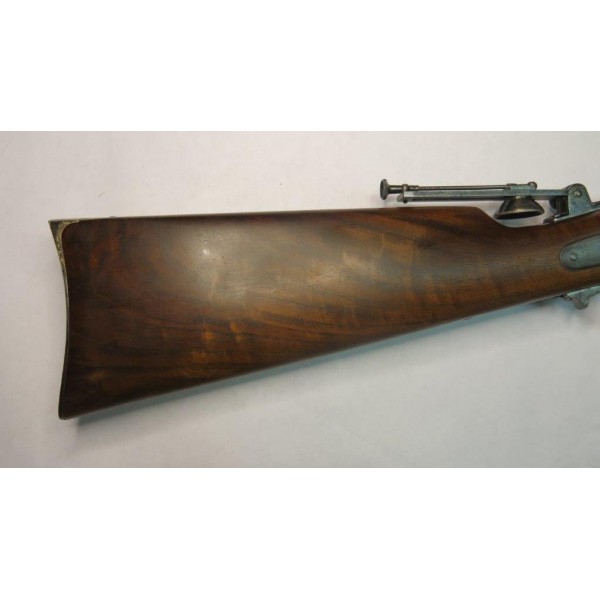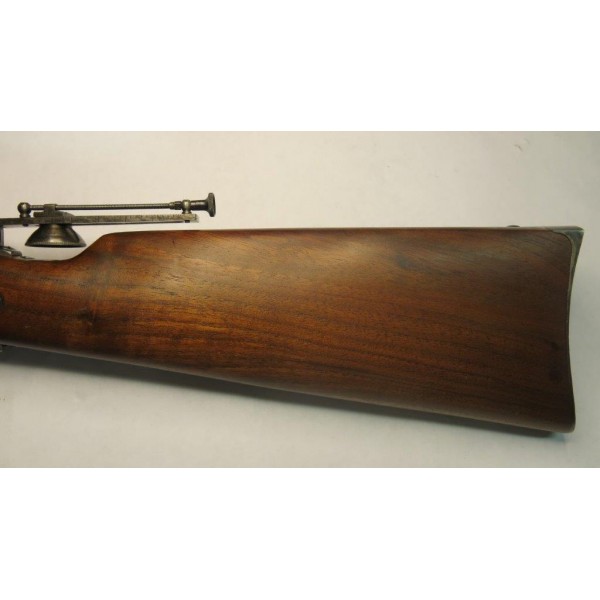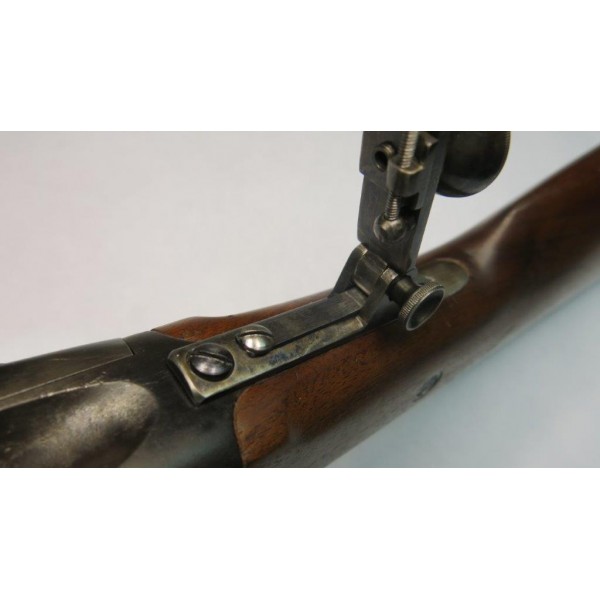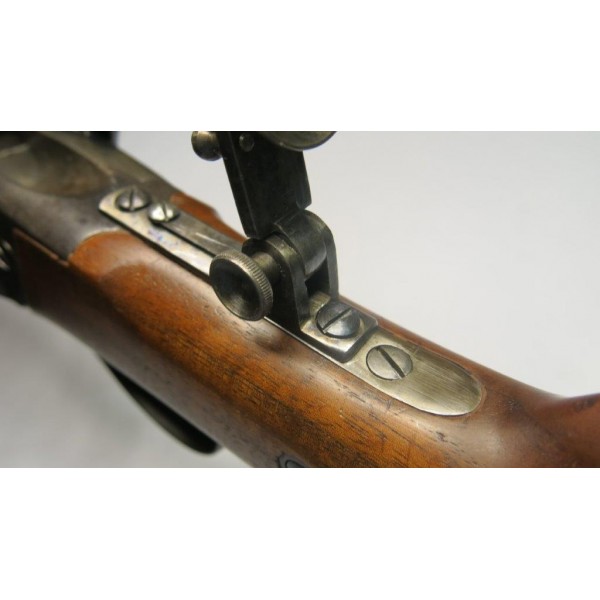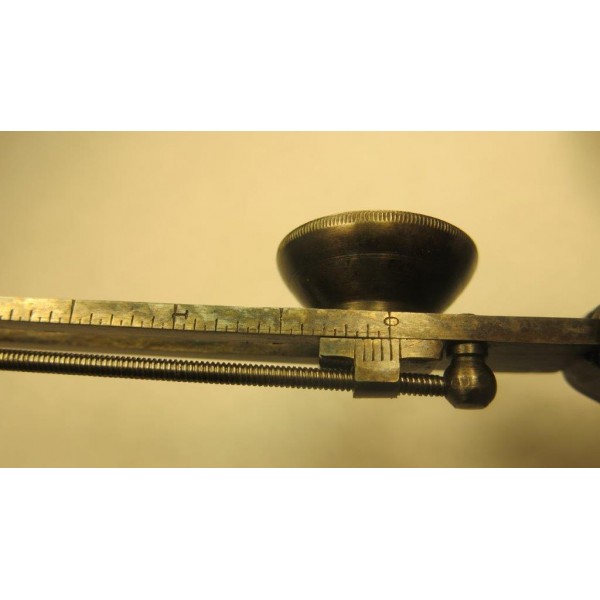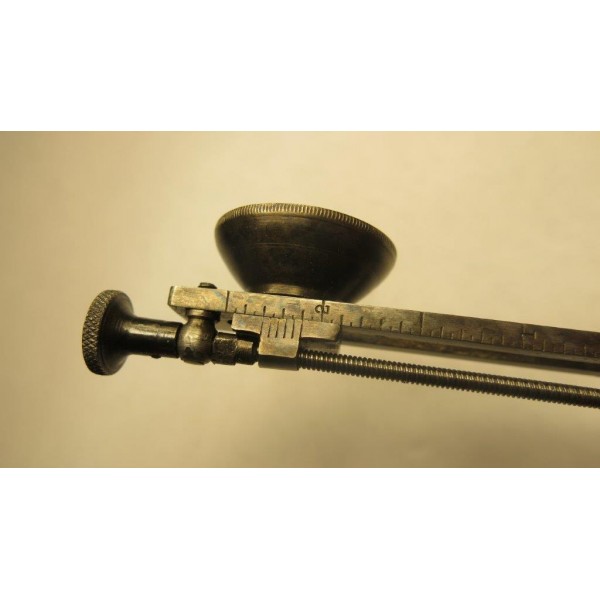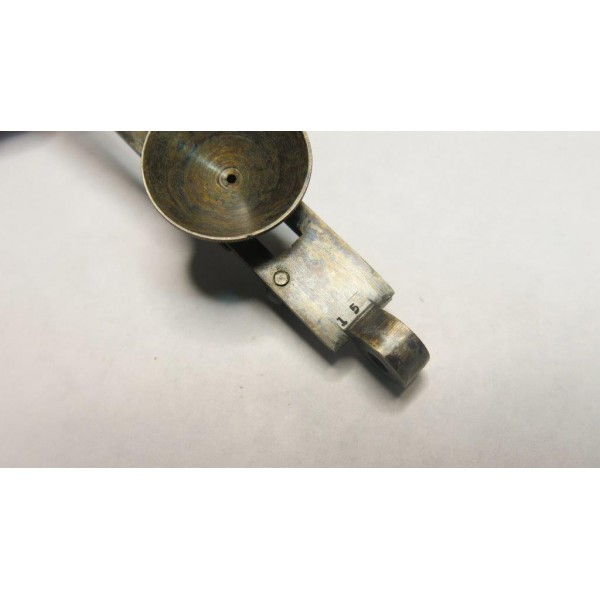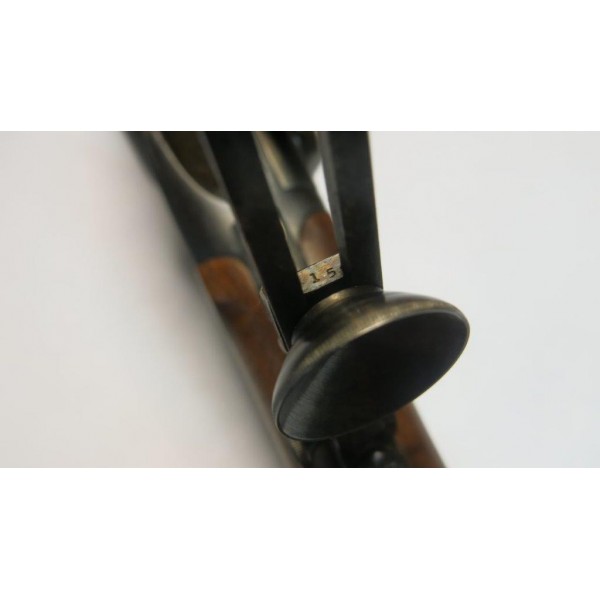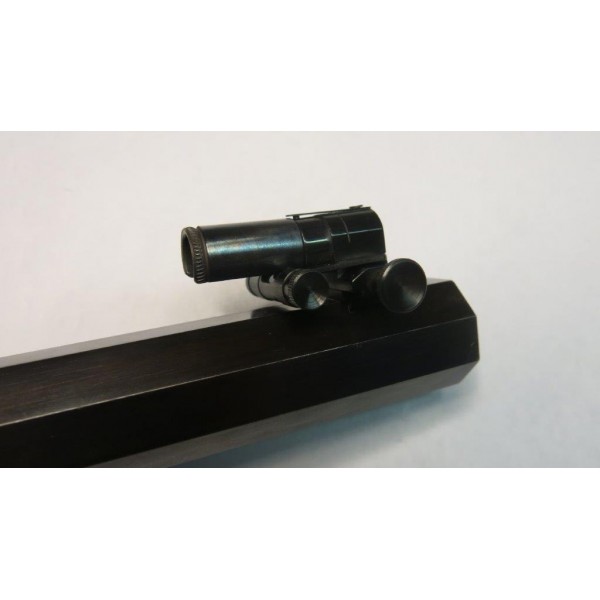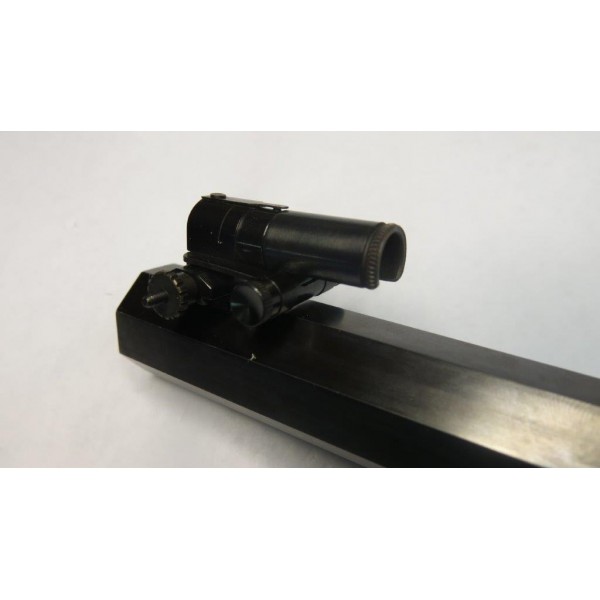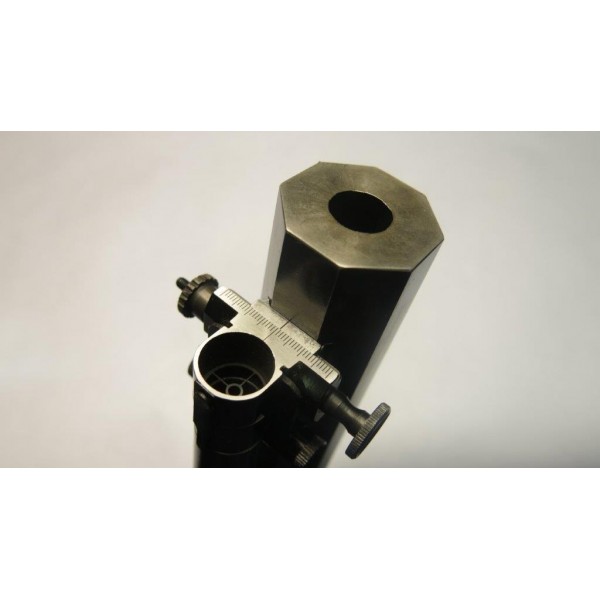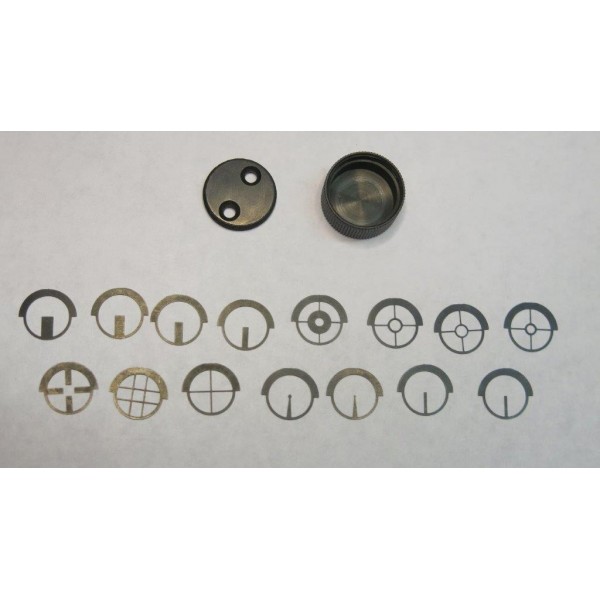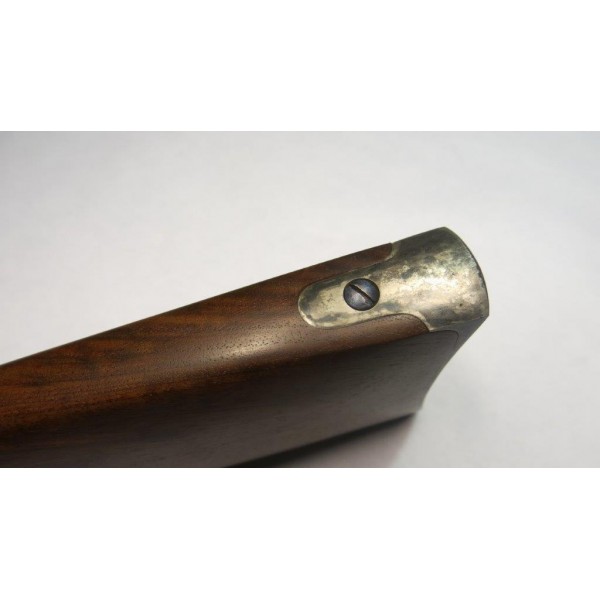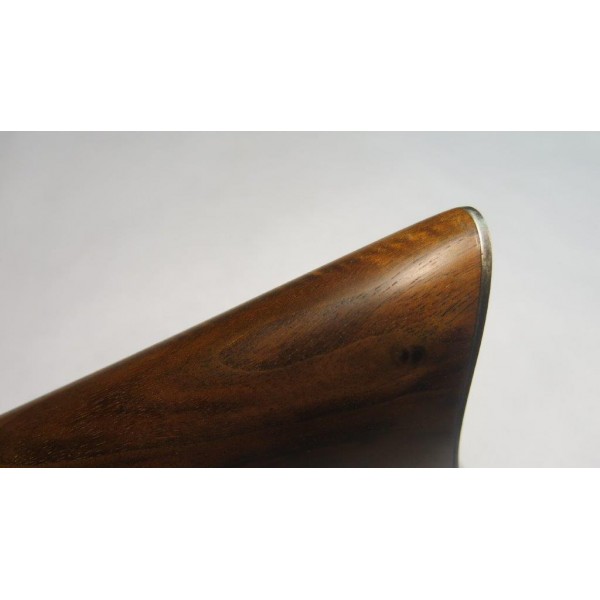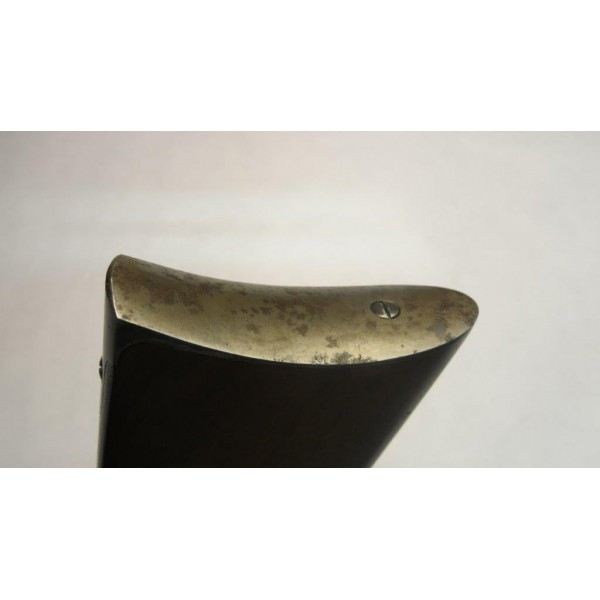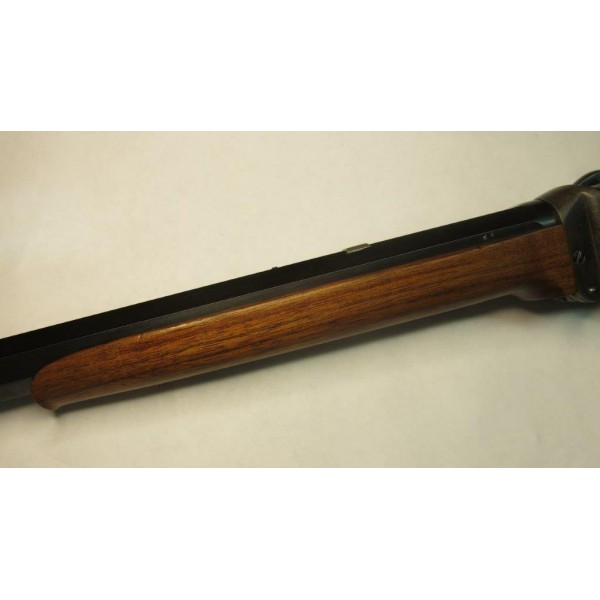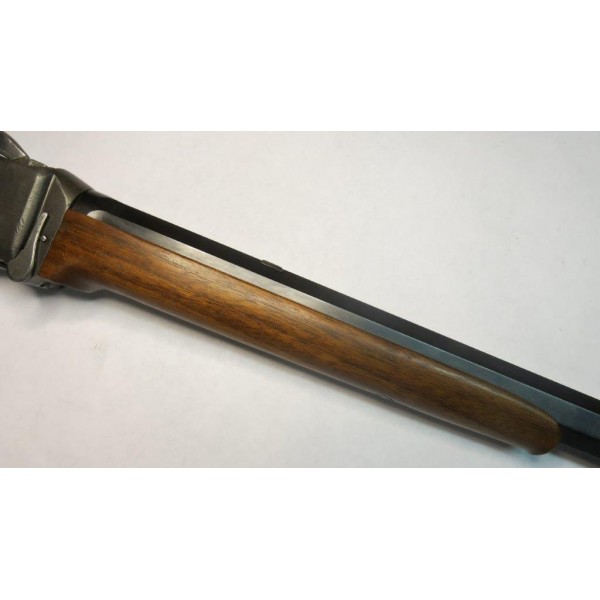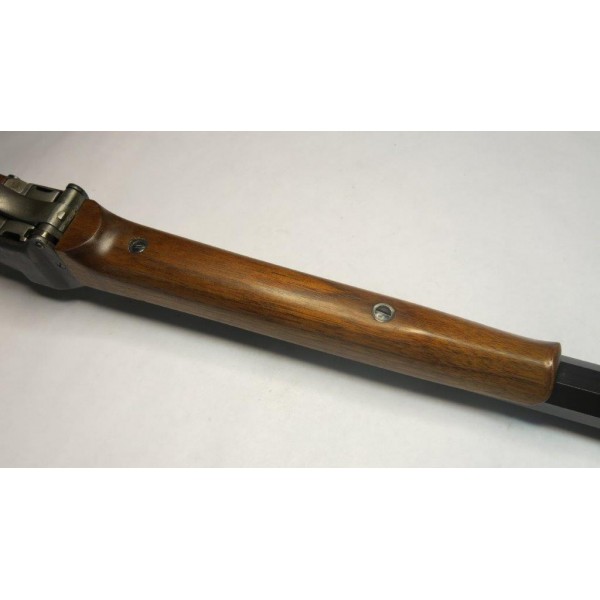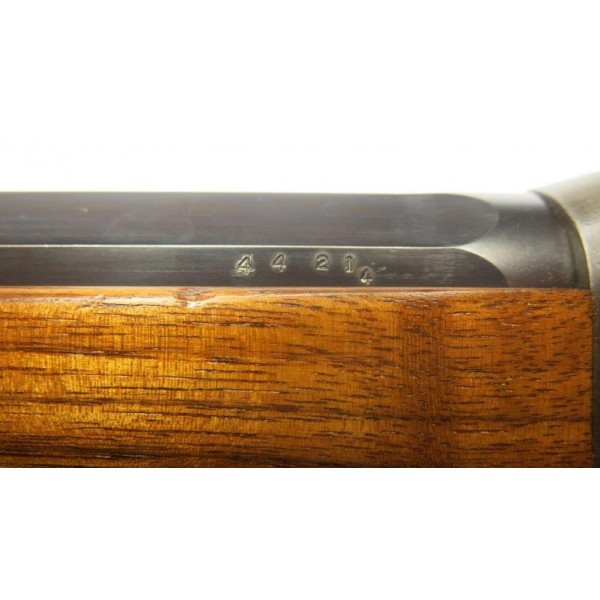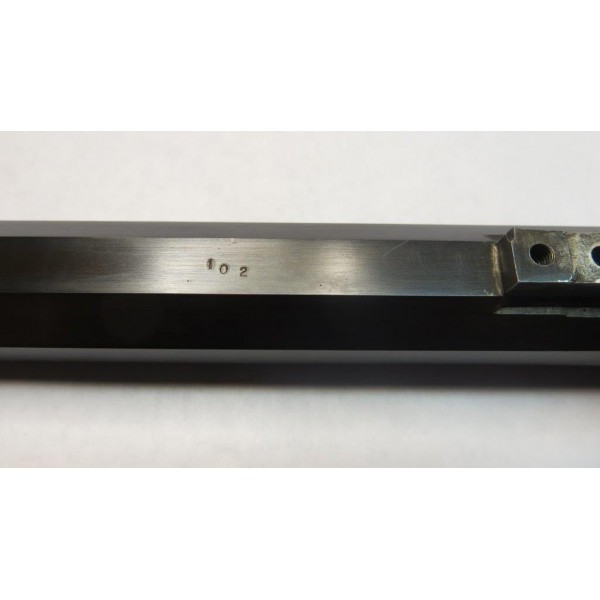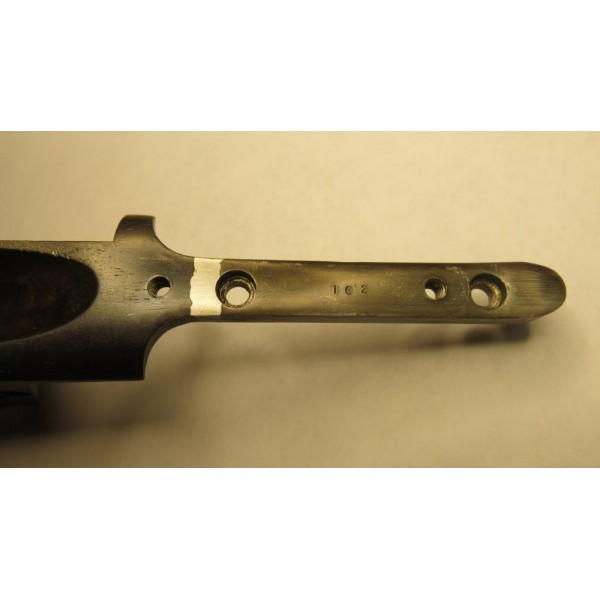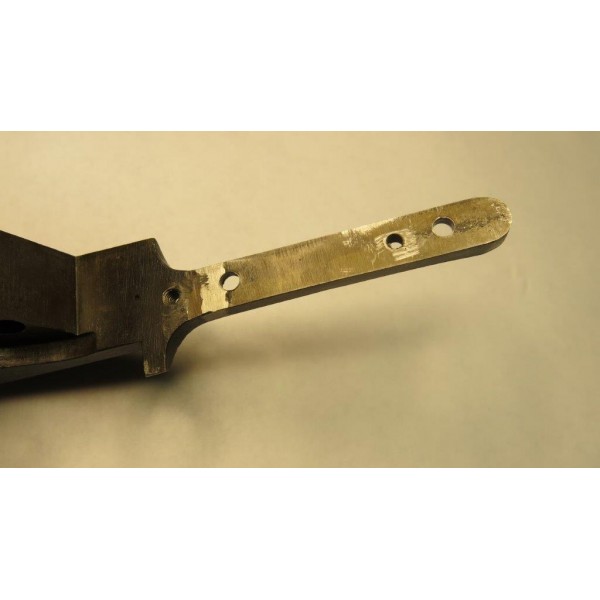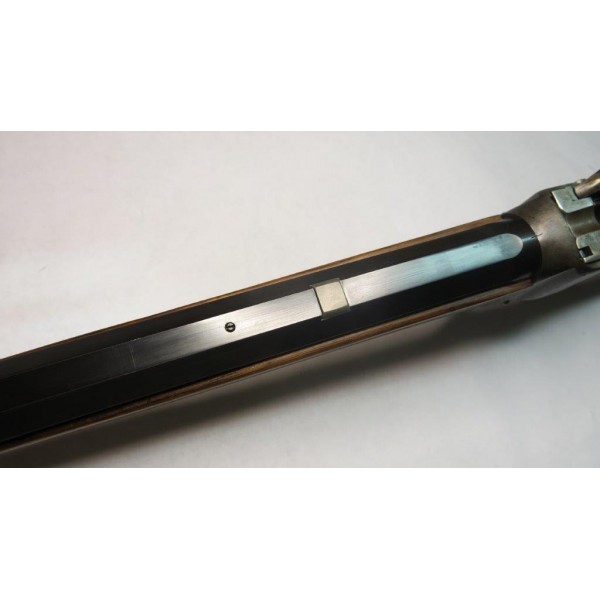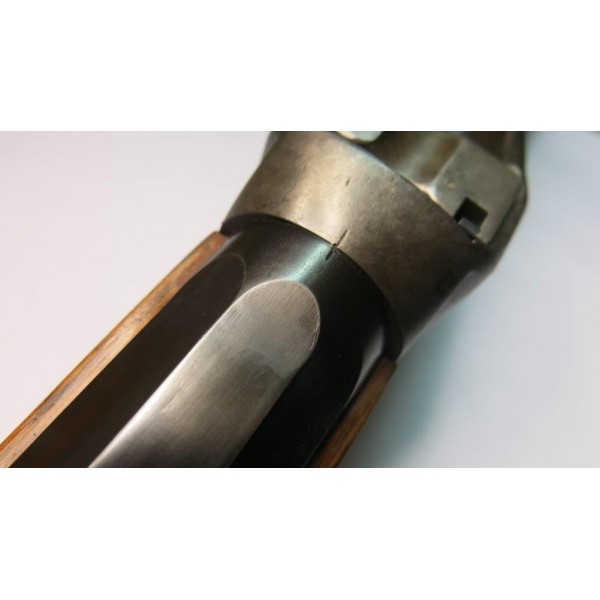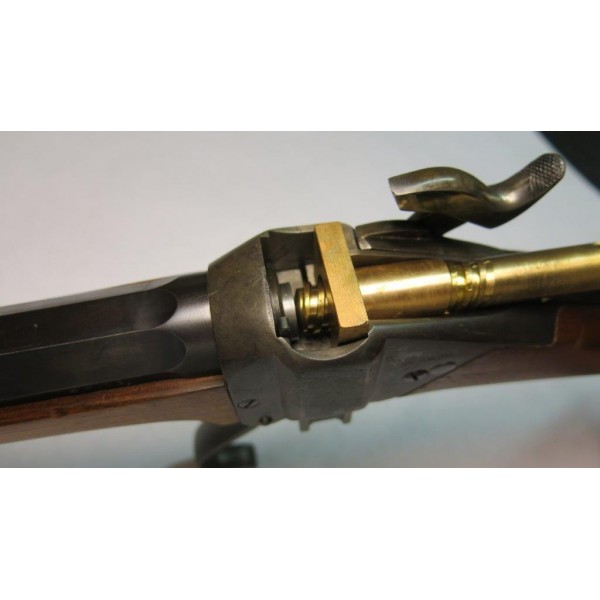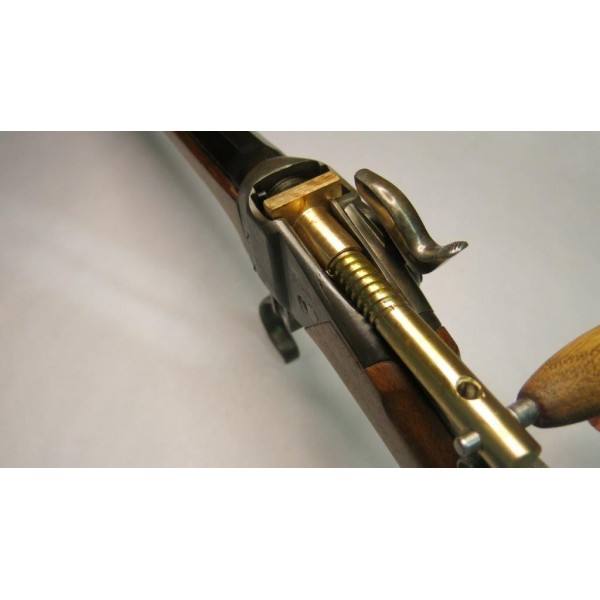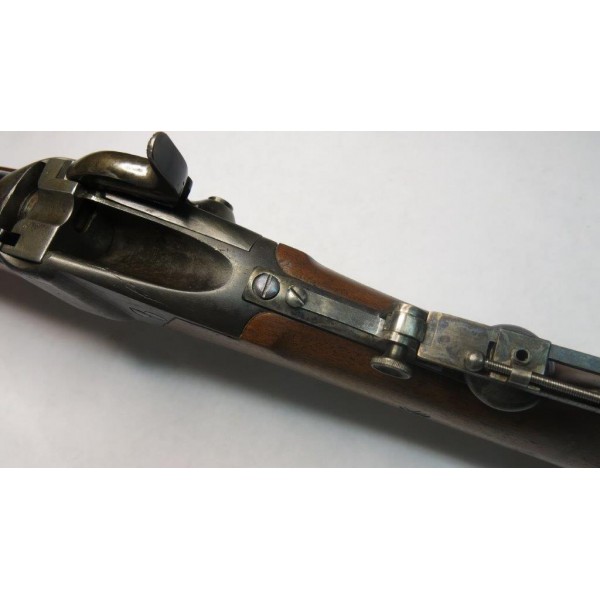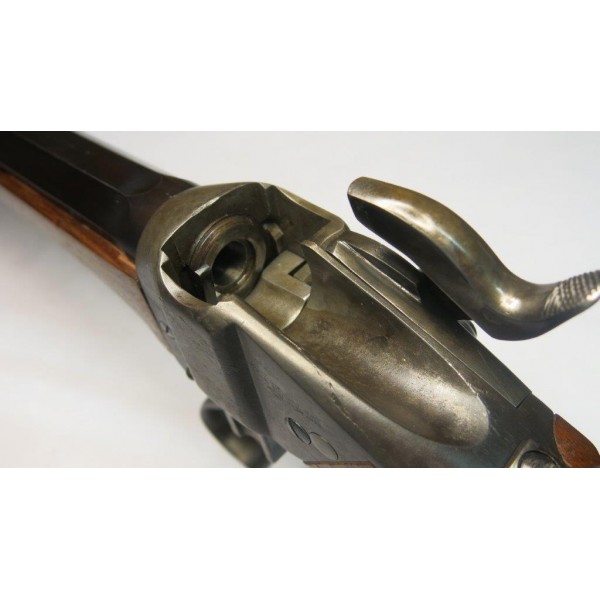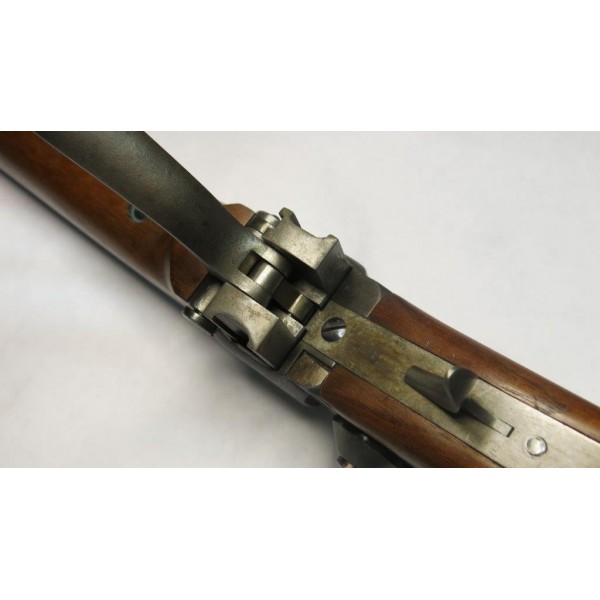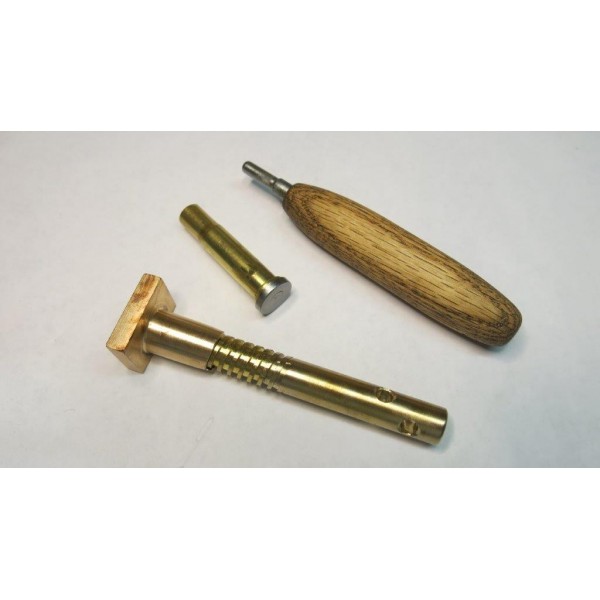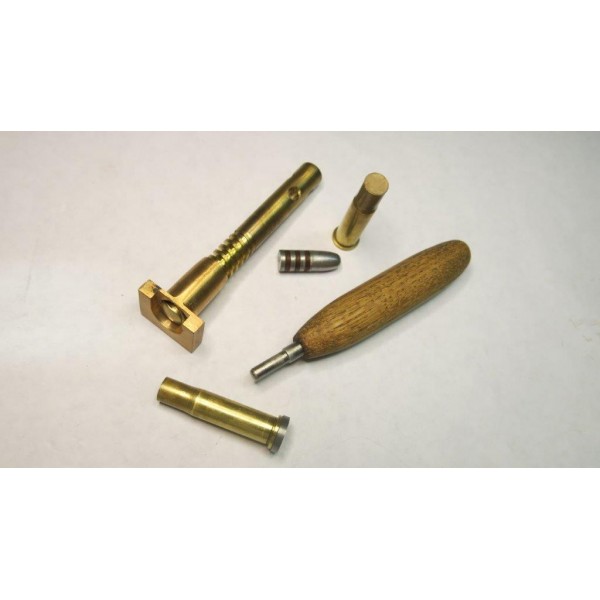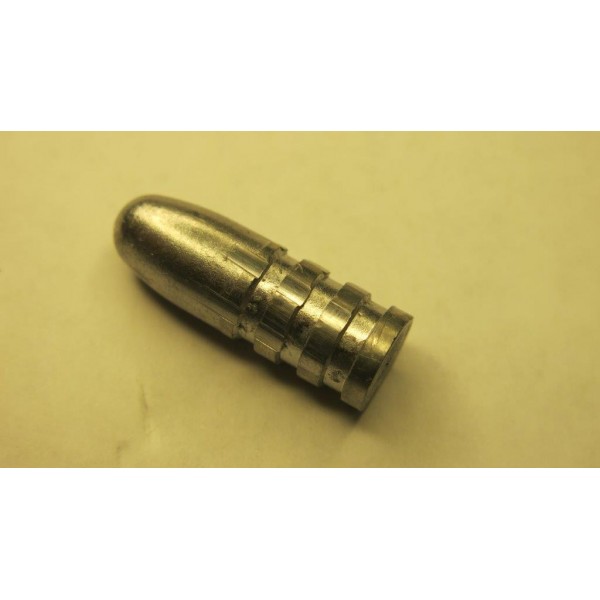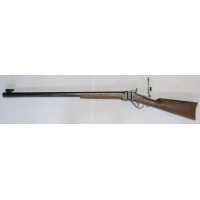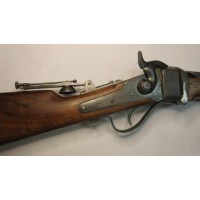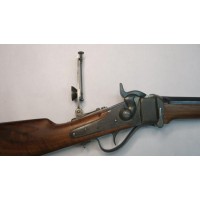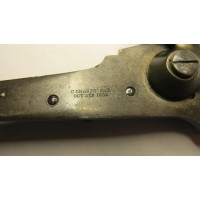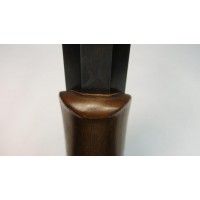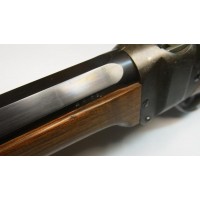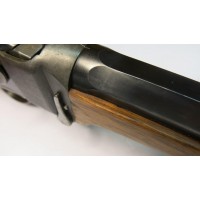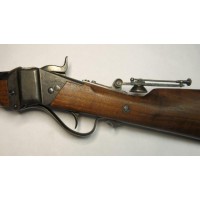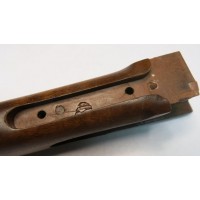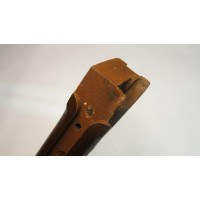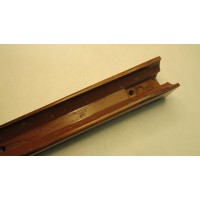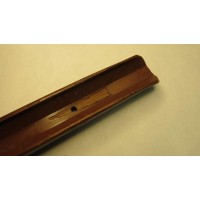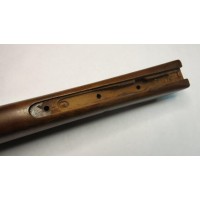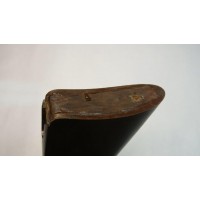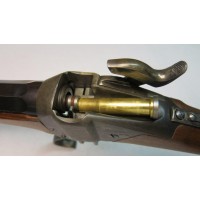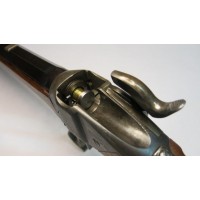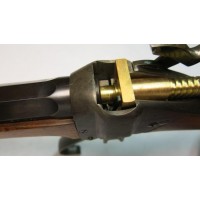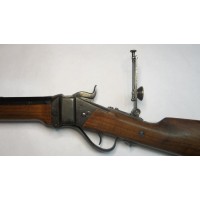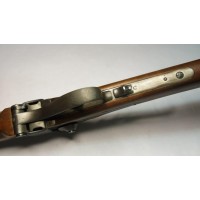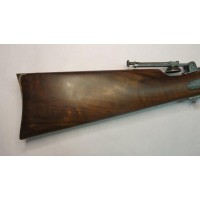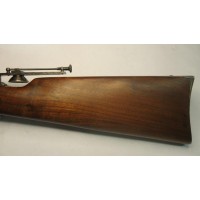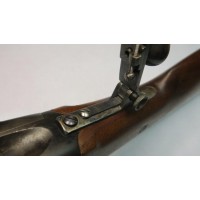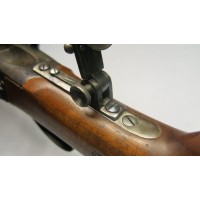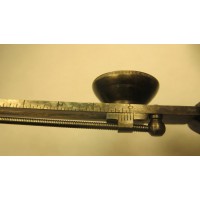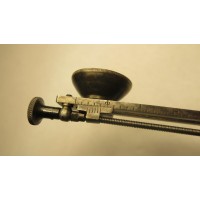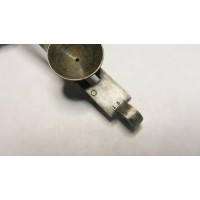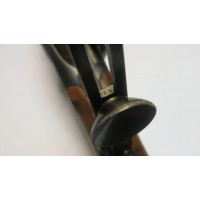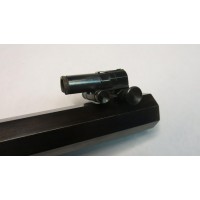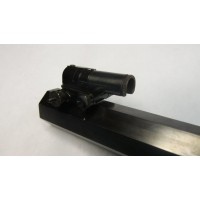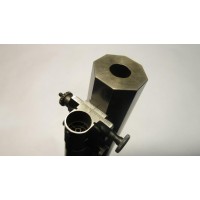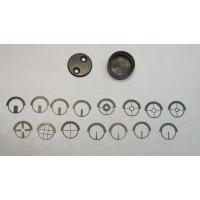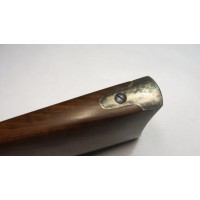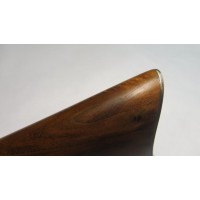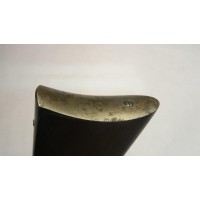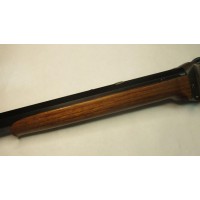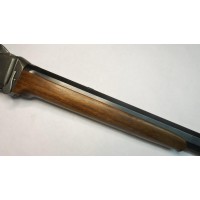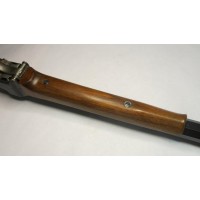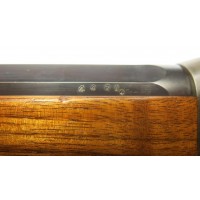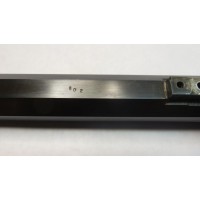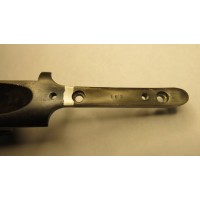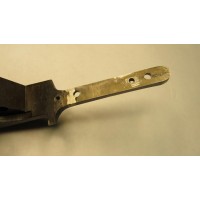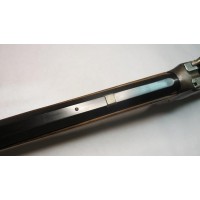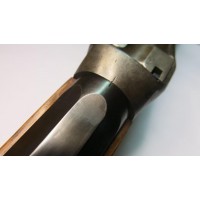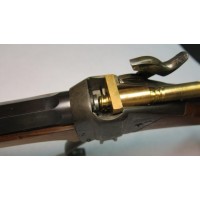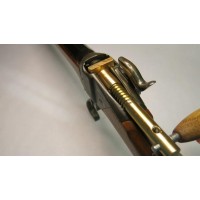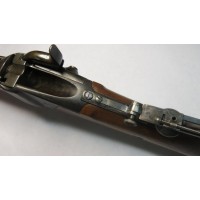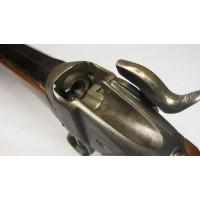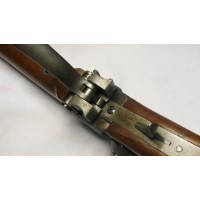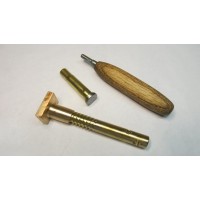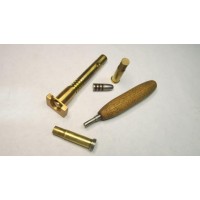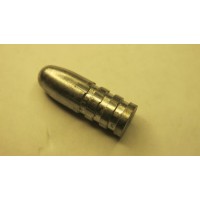Sharps Sporting Rifle Serial number 102 .44-77 Sharps Bottle Neck or .44-2 1/4
Sharps Sporting Rifle
Serial number 102
.44-77 Sharps Bottle Neck or .44-2 1/4
SOLD - $2495
This rifle is assembled from parts that were used by Sharps, Springfield and many others from the Civil War to the present. It is difficult to designate a specific model number to this rifle due to the various parts used in its construction but it closely resembles a cross between a Model 1869 and a Model 1874 Sporting Rifle. This rifle was an unfinished work in progress when I received it.
The receivers tang and the bottom of the barrel are marked with serial number 102. The significance of the serial number has not been determined.
The chamber designation is .44-77 Sharps Bottleneck or 44-2 1/4SBN. This cartridge was first introduced by Remington. Sharps started using the round in the Model 1869 in April of 1869. Sharps’ first loading used 70 grains of powder with a 380 grain paper patched bullet with a nominal diameter of .446”. In February of 1876 Sharps upped the powder charge to 75 grains and used a 400 grain bullet. Some sources refer to this cartridge as the .44-75.
The receiver was original to a Civil War era Model 1863 Sharps percussion carbine. The receiver was later modified and used in a Model 1869 that was converted to center fire. The receiver has been used again to build this rifle. It is marked C. SHARPS PAT. over SEPT. 12th 1848 on the left side. The tang of the receiver has been replaced so the original serial number is unknown. The weld is forward of the front tang screw and is under the tang sights base and not visible. It is unknown why it was replaced. It is marked with the serial number 102 between the two tang screws. The saddle ring bars forward anchor point has been blanked. The right side of the receiver has the relief cut for the percussion hammers front edge. The hinge pin retainer plunger screw has been replaced with a Lawrence primer feed plunger screw.
The barrel is believed to be a Badger. It is 29 13/16” inches long with a 6 groove, right hand, 18-inch twist. The bore diameter measures .4432” and the groove diameter .4513”. The rim rebate is .088” deep and .635” in diameter. The width across the flats is 1.105” at the muzzle and 1.145” forward of the collar. The collar is 1.250” in diameter. The barrels rear profile closely resembles what has been referred to as the Bridgeport Tulip Collar. The front sight dovetail is .450” wide. The rear sight dovetail is .500” wide. The rear sight dovetail and sight mounting screw hole have been blanked. The bottom of the barrel is marked with 102, 4” from the receive. The left flat is marked 44 2 1/4, without the slash mark, 1 1/4” from the receiver. The muzzle has been re-crowned flat due to damage.
The breech block is most likely from a Model 1868. The firing pin and extractor are cam operated. Welded up broken off tip of extractor and refit.
The lever latch is from the early percussion era in that it is taller than the later Model 1874 cartridge version.
The modified percussion lock plate is marked C. SHARPS’ PAT. over OCT. 5th 1852. The Lawrence primer feed has been ground away and the holes that were left have been welded over. The tumbler is the early percussion version that has the high half cock notch to give room under the hammer nose for the installation of a percussion cap. The hammer is a modified Bridgeport Model 1868.
The wood is unidentified modern production. All metal to wood contact has been epoxy set. The butt stock has the Army style butt plate and straight grip. The forend resembles the Bridgeport Schnauble profile.
The rear sight of this rifle is a Sharps Model 1874 German pattern vernier tang sight that was used on the Sharps Schuetzen style rifles that were designed by Charles E. Overbaugh. There were 69 of the Overbaugh rifles made between July 1877 and October 1878. This rifles sight is graduated to 2 1/2 inches, on the left side in hundreds of an inch, as are other observed German pattern sights. The only difference is this sights staff hinge screw is a knob style instead of a slotted machine screw style. The eye-piece aperture is .063” in diameter. The elevation adjustment span is from -.05” up to 2.10”. The staff is marked with the number 15 on the lower front. No other rifles used this sight.
The front sight is a Red River Sight Co., Model SF4, that is windage adjustable. It has a spirit level and 15 reticle inserts. The windage adjustment is based on the inch. The scale is 1” wide and graduated in .050” increments.
The trigger pull is 4 pounds +- 2 oz.
Weight is 12 lb. 10 oz.
Various markings
S, S top of breech block
L, c right side of breech block
X receiver bottom left
S receiver left side at patent
D lever spring lug
G bottom of trigger plate
M trigger right side
M left side of lever latch
S hinge pin
C, S firing pin
15 tang sight front bottom of staff
15 tang sight slider
120 receiver tang and bottom of barrel


